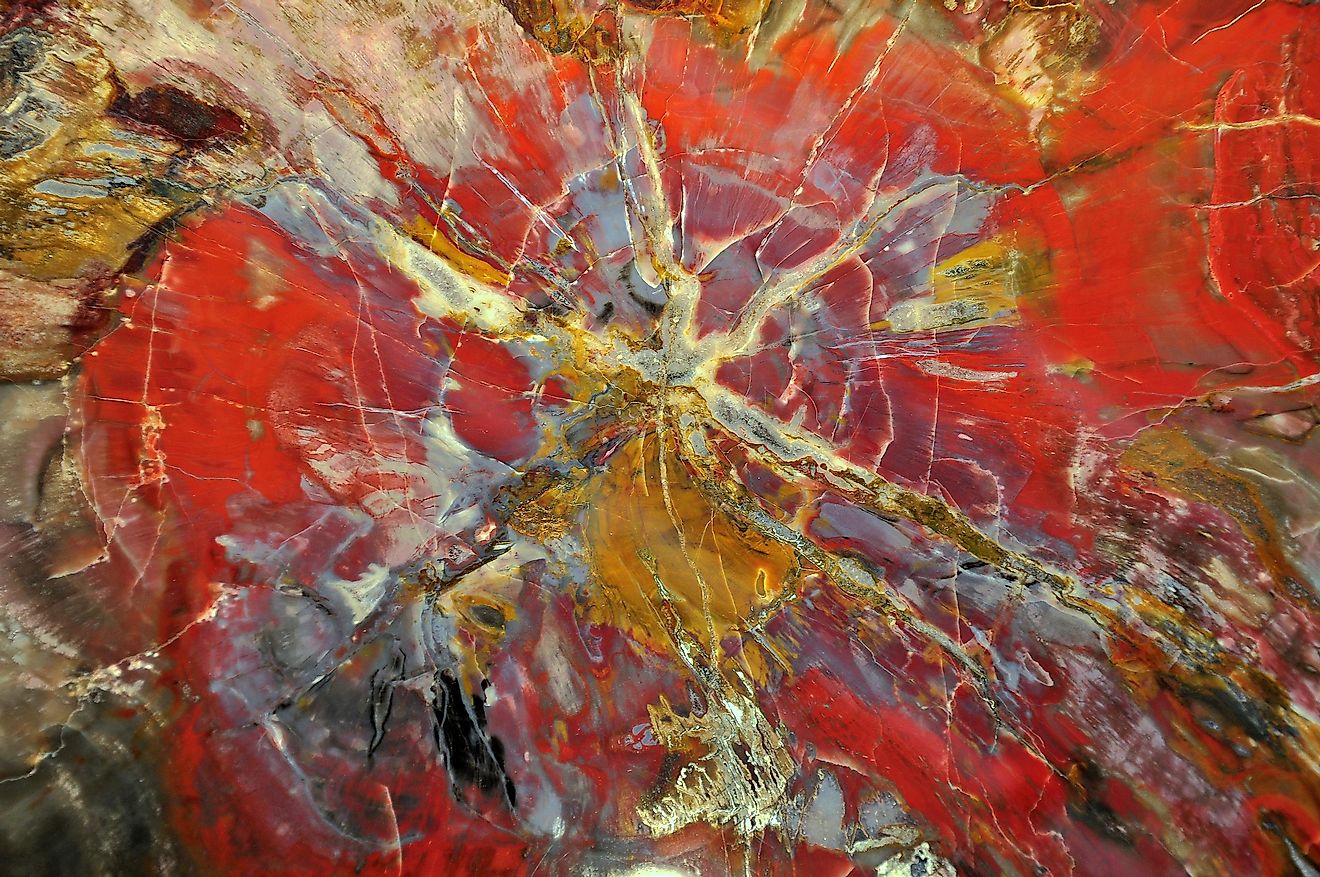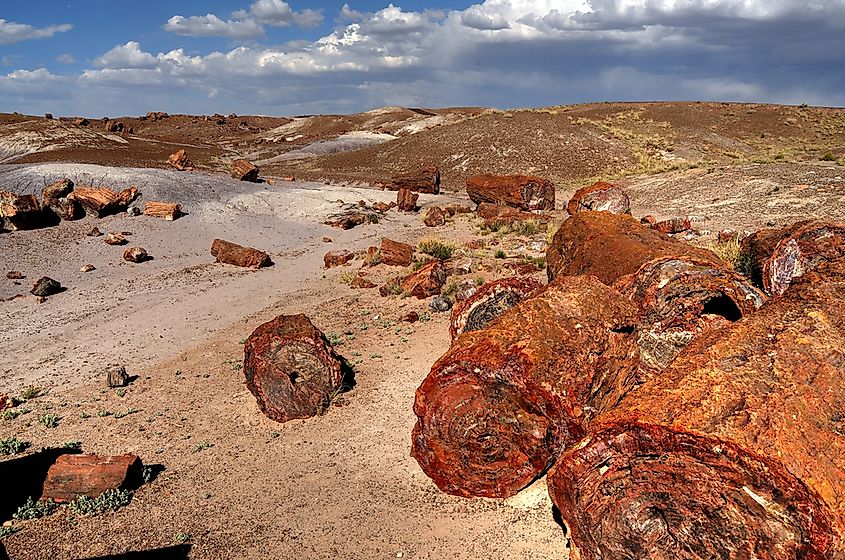Is It Legal To Collect Petrified Wood In The US?

Petrified wood is a fossil of an ancient tree. When a tree or a branch is buried deep in sediment with the lack of oxygen, which protects it from rotting and then undergoes mineralization, it creates fossilized, or petrified wood.
Over the centuries, groundwaters would slowly seep through the buried wood tissues, gradually replacing the organic material with the mineral (or a mix) that is dissolved in this particular water source. It can be silica, calcite, pyrite, or even opal. The wood retains the pattern of its internal structures but becomes agatized or otherwise mineralized. Essentially, it becomes a "stone" that looks like wood (with occasional color change, of course).
Is Petrified Wood Valuable?
It is definitely valuable from the historical and scientific point of view. The vast majority of petrified woods do not possess high value, not more than normal agates of chalcedony. On occasion, wood becomes opalized; some of these specimens can be absolutely stunning and fetch up to a few hundred dollars depending on the size and looks.
Some unusual specimens of petrified wood look almost identical to the initial wood, and they can be more scientifically valuable. These specimens with near-perfect preservation are rare (although those that have clearly recognizable bark and woody structures are very common).
Is Petrified Wood A Protected Resource?
Petrified wood is a fossil, and it is legally protected in the United States. Please remember that people have gone to jail for collecting petrified wood on lands that do not permit removing natural materials or fossils specifically and do not risk it. It is absolutely prohibited to disturb or remove fossils from National parks and protected federal lands.
Several locations permit you to collect and take your specimens home; some states (for example, Florida) issue a special permit, although that does not override Federal protection. You can also collect petrified wood on private property (not the one rented from the State) if you get permission from the owner of the land. Make sure it is written and not just verbal; otherwise, they can easily complain if you find something of value. You can also collect anything on the land you own.
How Do I Collect Petrified Wood Legally?
It is not easy to figure out what are the current rules in a specific state. It is a good idea to call one of the parks or try local Fishing and Hunting office as they sometimes know the stance on the petrified wood. Most of the time, obtaining a permit is not at all difficult, and it is useful to print out a few templates to carry with you in case you encounter promising private land.

Utah is an excellent example of a state that allows collecting petrified wood for personal collection; however, it prohibits any commercial activity with such wood. As long as you are not planning to sell it, you can collect and take home up to 250 pounds of this wood from public state grounds. If you decide to eventually sell petrified wood from Utah or anything you made with it (decorations, furniture, jewelry, etc.), you will need to buy a permit from the state.
Can I Visit Protected Fossil Wood Forests?
There are several protected petrified forests across the US. Those are places of historical significance or a protected National Monument. Most of the time, you will be allowed to visit and even touch the wood but not break or take it away. Most of the time, these protected areas have gift shops with samples from tiny pieces to slabs. These shops have lovely specimens and finance the necessary services in the parks, so it is a win-win.
What Are Some Types Of Petrified Woods?
"Peanut wood" does not have anything to do with peanuts and was named this way due to its peculiar contrasting pattern: white spots approximately the size of peanuts on the very dark grey-brown or almost black base. This interesting type of organic gem is created from the fossilized driftwood, a wood that underwent an additional step in its journey of petrification. A single branch fell into the water and sank to the bottom, where burrowing clams created holes and tunnels in it. The tunnels were filled with white calcium skeletons of diatoms. The wood then got buried under the sediment and underwent petrification, eventually emerging on land.
"Petrified palm wood" is not really wood; it is because palms themselves are not built of wood. Instead, like a giant and sturdy stem, they consist of fibrous parenchyma surrounded by hollow tubes of xylem. This petrified palm material has a very distinct pattern.
Why Silicified Woods Are Considered Gemstones Of Fossil Woods?
Some of the woods were preserved by one of the two types of silicification: agatization and opalization. In the case of the former, the organic material is replaced by chalcedony; in the latter - by opal. In rare instances, the process produces beautiful specimens worthy of lapidary work. Wood infilled by opals can be especially stunning. Only a tiny fraction of fossilized wood would meet the requirement: it has to have bright color, nicely preserved visible "wood" structure, and be hard enough to accept a high polish. These specimens are made into cabochons or figurines. Lesser specimens are tumbled or made into home decorations.
Very rarely, cavities inside the logs serve as crystallization locations with crystals of calcium or quartz growing inside. It looks like a beautiful geode made of petrified wood.











